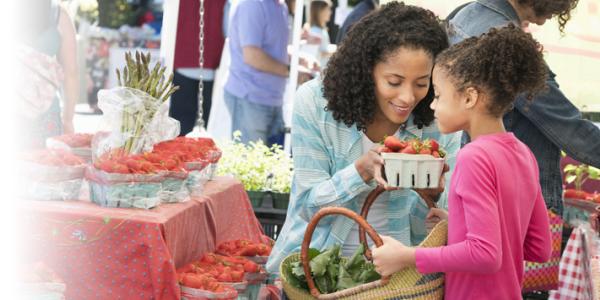
Eating healthy usually begins with the choices you make in the produce aisle. But, knowing when to buy organic produce and when it's safe to stick with conventionally grown can be a challenge, especially since it may change from year to year.
Fortunately, there's an easy way to keep track of which fruits and vegetables are more likely to have high levels of pesticides and other toxins. Released each Spring since 2004, the Environmental Working Group — an organization of scientists, researchers and policymakers — have released their "Dirty Dozen" and "Clean Fifteen" lists to help you find the safest foods in the produce aisle. Informed by the Department of Agriculture's test data, these lists shed light on which fruits and vegetables have the highest and lowest pesticide contamination rates.
This year, data from more than 46,000 samples of 46 fruits and vegetables were analyzed to rank each item. With the help of these up-to-the-minute lists, you can prioritize buying organic items that appear on the Dirty Dozen, and save a few bucks buying conventionally grown items from the Clean Fifteen.
The Dirty Dozen for 2023
These items have been shown to contain high levels of residual pesticides when grown conventionally. Consider buying the organic options when possible, especially if you consume them frequently.
- Strawberries
- Spinach
- Kale, collard, & mustard greens
- Peaches
- Pears
- Nectarines
- Apples
- Grapes
- Bell & hot peppers
- Cherries
- Blueberries
- Green beans
The Clean Fifteen for 2023
These fifteen foods showed little to no pesticides or toxins, and are considered generally safe to consume in their non-organic form.
- Carrots
- Watermelon
- Sweet potatoes
- Mangoes
- Mushrooms
- Cabbage
- Kiwi
- Honeydew melon
- Asparagus
- Sweet peas (frozen)
- Papaya*
- Onions
- Pineapple
- Sweet corn*
- Avocados
What about the other 19 fruits and vegetables tested?
As mentioned, 46 total fruits and vegetables were tested to determine levels of pesticides and toxins. While the Dirty Dozen are clearly those that you should prioritize when buying organic, and the Clean 15 are generally safe in non-organic varieties, that leaves 19 items in the middle of the list. These items may not contain dangerous levels of pesticides, but they aren't exactly free of toxins either. Some of these items have thick skins that you peel before eating, which minimizes your risk. For the others, consider buying organic if you consume them very frequently:
- Tomatoes
- Winter squash
- Celery
- Potatoes
- Cherry tomatoes
- Lettuce
- Tangerines
- Cucumbers
- Broccoli
- Summer squash*
- Plums
- Eggplant
- Raspberries
- Grapefruit
- Snap peas
- Oranges
- Cantaloupe
- Bananas
- Cauliflower
*A small amount of sweet corn, papaya and summer squash sold in the US is produced from genetically modified seeds. If you want to avoid genetically modified produce, consider purchasing organic varieties of these items.
This article first appeared in the May 2023 edition of the HealthPerks newsletter.

